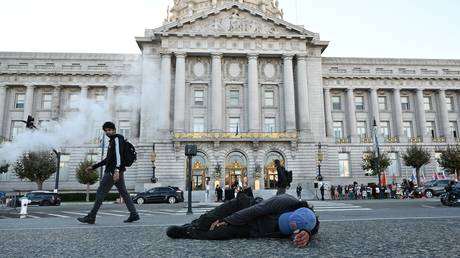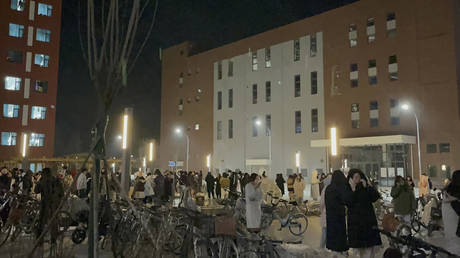Families with children saw the steepest rise this past year, the Department of Housing and Urban Development has found
More Americans are homeless than ever before, according to a report released by the US Department of Housing and Urban Development (HUD) on Friday. The agency blamed inflation, a shortage of housing, and the expiration of eviction protection measures adopted during the Covid-19 pandemic for the surge.
HUD’s annual count of homeless Americans reached 653,104 in January, the highest number on record since the agency instituted its current system for counting the unhoused in 2007. The figure represents a 12% increase over last year’s count, with 70,650 homeless individuals joining or returning to the population.
First-time homelessness especially increased at an unprecedented rate, with a 25% uptick driven largely by rent increases and the demise of pandemic-era rent control programs, according to HUD. At the same time, nearly a third (31%) of the homeless population reported being chronically unsheltered.
Read more Xi credited with San Francisco homeless cleanup
Xi credited with San Francisco homeless cleanup
While the increase was sustained across all demographics, people in families with children fared the worst, with a 15.5% uptick in homelessness. These constituted 28% of the entire unhoused population in 2023.
HUD acknowledged that rental housing had been in unusually short supply in 2022, calling the market “challenging,” while insisting a government-sponsored construction boom had solved the problem.
A crisis in affordability persists, however. While median rents rose by 18.8% between 2001 and 2022, adjusted for inflation, median incomes only increased by 4.3% during that period. A report released by Moody’s Analytics earlier this year found that average-income households pay nearly 30% of their income in rent.
At the same time, housing prices continue to grow, with the Bureau of Labor Statistics’ shelter index being the primary factor driving monthly increases within the larger Consumer Price Index.
The disastrous numbers come a year after the Biden administration claimed to have “halt[ed a] rapid rise in homelessness.” While the homeless population somewhat leveled out from 2020 to 2022 thanks in part to the eviction moratoriums adopted during the coronavirus epidemic and accompanying economic crisis, most of those protections have since expired, dumping renters into what housing advocate Diane Yentel of the National Low Income Housing Coalition described as a “brutal housing market, with skyrocketing rents and high inflation.”
“Without significant and sustained federal investments to make housing affordable or people with the lowest incomes, the affordable housing and homelessness crises in this country will only continue to worsen,” Yentel said in a statement on Friday.
HUD’s homelessness count, taken on a single night in January 2023, does not include individuals temporarily or indefinitely staying with family or friends or in facilities not classified as shelters, or those in the process of transitioning to permanent housing, a counting method critics have argued captures just a small slice of the problem.

 1 year ago
391
1 year ago
391







 English (US) ·
English (US) ·